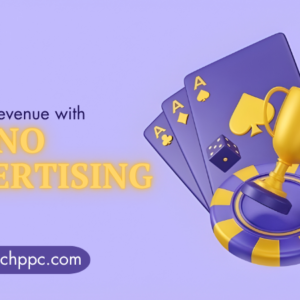If you’ve ever managed Dating Personal Ads, you know one simple truth—every click costs money, but not every click creates value. The online dating ad space is crowded. Advertisers are spending thousands trying to reach singles, yet most campaigns don’t return what they should. Why? Because too many advertisers throw money at ads without a real plan for budgeting or performance measurement.
Let’s be honest, dating is emotional. But your ad budget shouldn’t be. Whether you’re running Personal Dating Ads on a major platform or testing small-scale Online Personal Dating Ads, understanding how to set and optimize your budget can mean the difference between consistent profit and expensive trial and error.
This article breaks down how advertisers can set a clear, data-driven budget for Dating Personal Ads—so your campaigns don’t just run, they perform.

The Dating Ad Market Is More Competitive Than Ever
According to a recent Statista report, global online dating ad spend is expected to cross $900 million by 2026. That’s a lot of advertisers bidding for the same attention span. The result? Rising click costs and tighter conversion windows.
If you’re managing Dating Personal Ads, your challenge isn’t just finding traffic. It’s finding profitable traffic—audiences that click, connect, and convert without draining your budget.
“I’m Spending, But I’m Not Seeing Returns”
Many advertisers fall into this pattern: set a random budget, run some dating creatives, and hope for leads. A few clicks later, they see rising costs and no meaningful engagement.
The core issue? They don’t budget based on intent or performance. Dating ad traffic varies dramatically—what converts on one ad network may flop on another. Without a clear budget plan, your campaign becomes guesswork.
Think of it this way: If you’re promoting a dating site or app, every dollar spent should bring measurable interaction—sign-ups, chat starts, or clicks to a profile page. If not, you’re funding visibility, not growth.
Budgeting Isn’t About How Much, It’s About Where
Advertisers often obsess over “how much” to spend, but the smarter question is “where.” Not all dating audiences behave the same way. For instance, mature audiences might respond well to Personal Dating Ads on content networks, while younger users might convert faster on mobile-native placements.
This is where data segmentation matters. Split your budget into smaller test segments across traffic sources. For example:
- 30% for discovery: Testing new networks and creatives.
- 50% for scaling: Investing in top-performing placements.
- 20% for retargeting: Bringing back visitors who showed interest.
Such distribution keeps your spending controlled while allowing flexibility.
How Smarter Budgeting Turns Small Campaigns Into Profitable Ones
Budgeting is not about cutting costs—it’s about understanding efficiency. A small advertiser with a $100/day budget can often outperform a $1000/day campaign if they allocate money to the right channels and formats.
If you’re unsure where to begin, explore different Advertising Formats for Dating Personal Ads. Certain ad types—like native or in-content placements—tend to bring higher engagement at lower cost-per-click compared to generic display banners.
Setting a Realistic Dating Ad Budget
Let’s make this practical. Here’s how you can approach budget planning like an experienced advertiser.
Define Your End Goal
Are you driving free sign-ups, premium upgrades, or chat room activity? Your goal determines your ideal cost per acquisition (CPA). For example, if you earn $5 per sign-up, your CPA should ideally stay under $2.50 for profit.
Understand Traffic Costs by Source
Not all networks charge equally. Some CPCs can be as low as $0.05 for content-based sites, while high-intent traffic from dating-related pages may go up to $1.50. Compare ad networks before committing your full budget.
Set a Testing Phase Budget
Start small. Dedicate about 20% of your total budget for initial testing—different creatives, audiences, and bidding models. Analyze what works before scaling up.
Focus on ROI Metrics, Not Vanity Metrics
High click-through rates (CTR) look good, but they don’t pay bills. Monitor metrics like cost per sign-up, engagement rate, and lifetime value (LTV) to ensure true profitability.
Use Retargeting to Stretch Your Budget
Retargeting helps recover users who clicked but didn’t convert. A small budget segment for retargeting (10–20%) can drastically improve your ROI.
Scale Gradually
Once a campaign starts converting, don’t double your spend overnight. Increase your budget by 15–20% increments while monitoring the CPA.
Budget Elasticity in Dating Ads
Here’s something often overlooked—dating ad performance is seasonal. Activity spikes during holidays, weekends, and around New Year when people feel lonelier. Smart advertisers plan “budget elasticity,” meaning they expand spend during high engagement periods and tighten during slow phases.
Instead of flat spending, use flexible pacing. For example, allocate more daily budget Friday through Sunday and pull back midweek when activity dips.
This prevents wasted impressions while ensuring maximum exposure during high-conversion hours.
Pair Smart Bidding with Contextual Targeting
Budgeting alone won’t fix underperforming ads. Combine it with precise targeting. Contextual ad networks—like 7SearchPPC’s Dating Personal Ads platform—allow advertisers to match dating ads with relevant content, increasing engagement without raising bids.
This approach stretches your budget further because clicks come from audiences already primed for dating-related content.
Common Budgeting Mistakes Advertisers Make
Even seasoned advertisers slip up. Here are some traps to avoid:
- Skipping data analysis: Running ads without reviewing daily spend or ROI.
- Over-bidding early: Spending heavily before testing audience response.
- Ignoring creative fatigue: Using the same ad too long, reducing CTR.
- Neglecting mobile optimization: Dating users are primarily on mobile devices.
- No campaign layering: Failing to separate test, scale, and retargeting budgets.
Avoiding these mistakes ensures smoother budget utilization and more stable returns.
Turning Budget Insights Into Long-Term Profit
Once your Online Personal Dating Ads start delivering steady conversions, it’s time to reinvest. The best advertisers don’t pocket all profits immediately—they recycle part of it into testing new channels or improving creatives.
This continuous improvement loop keeps campaigns fresh, data-rich, and competitive.
You can further refine this by tracking lifetime customer value (LTV). If a user spends $50 over several months, spending $10 to acquire them is smart budgeting—not overspending.
Bringing It All Together: The Profitable Formula
A profitable Dating Personal Ads campaign isn’t built on massive spend—it’s built on clarity:
- Know your cost targets.
- Test before scaling.
- Use contextual placements.
- Monitor, adjust, and retarget.
These simple habits turn average advertisers into consistent performers. And as you grow, platforms like 7SearchPPC make it easy to manage and optimize ad budgets through transparent bidding and audience data.
Key Takeaways for Advertisers
- Start with clear profit goals before deciding on ad spend.
- Segment budgets by testing, scaling, and retargeting phases.
- Use contextual ad networks for better ROI.
- Scale spending gradually and track performance metrics daily.
- Treat budget as a strategy, not a number.
Conclusion
Budgeting for Dating Personal Ads isn’t about spending less—it’s about spending right. The advertisers who thrive in this space aren’t the ones with the biggest wallets, but those who allocate budgets with intent, flexibility, and insight.
By testing smartly, tracking consistently, and learning from results, you’ll not only improve ROI but also position your campaigns for long-term growth in the competitive dating ad market.
When you’re ready to take the next step and create a dating campaign, explore how data-backed budgeting and ad optimization work together to bring real results.


